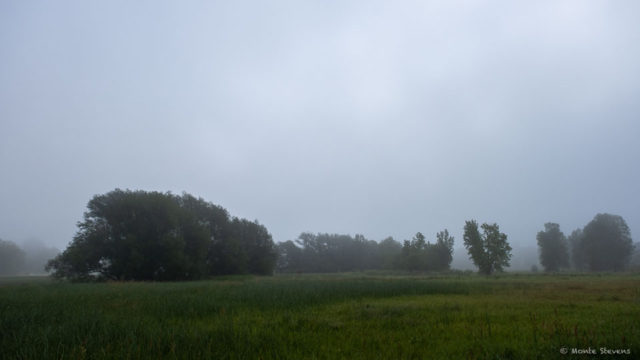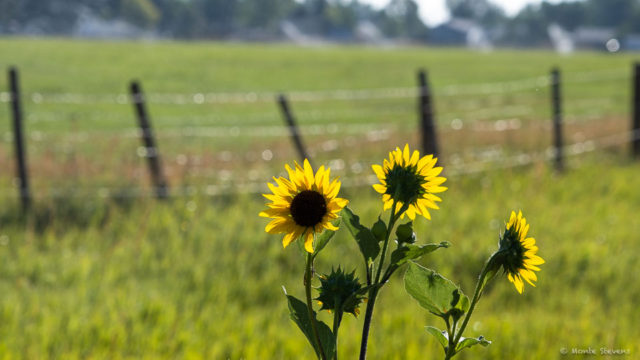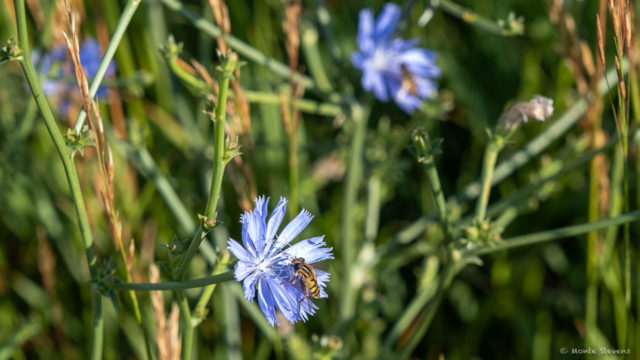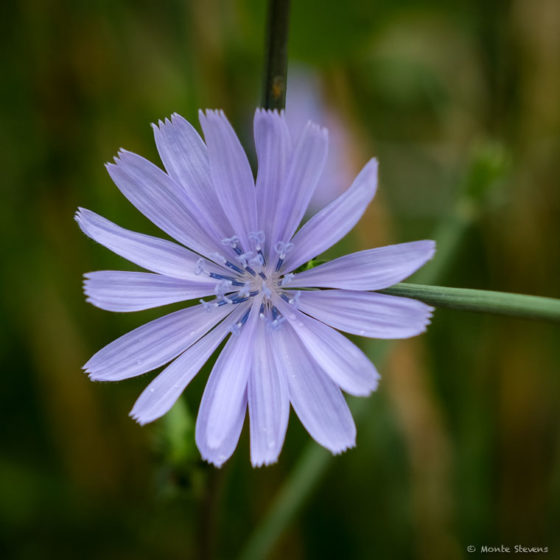I chased some early morning fog then headed out to one of the natural areas to write and get in a morning walk. It’s about a 5 mile drive to Reservoir Ridge and then found the sun shining brightly there and eerily quiet. I watched the sun burn off the fog along the foothills to the south, nature at work. Everything was wet from the humidity and dew; the split rail fence, the grass, and a spiderweb. The sun and wind will quickly dry things out. Thus begins a morning in the meadow. Makes me smile somewhere inside of me as I experience it.
The birds now begin to sing as if they were waiting for me. They dart so quickly in the aire and must in order to catch all the quick and nimble flying insects. I watch as the wind slowly moves the fog to my east in a southerly direction. While small clouds along the foothills are moved south by the same wind. I watch a blue-jay perched on the fence hop to the ground in hot pursuit of some insect. He misses on the first couple tries then finds success. Such a beautiful bird dressed in blue, a work of art.
Now a bit of information about common chicory from Wikipedia. I see these all over the place and finally looked them up. The bees love them. The plant was adopted as a coffee substitute by Confederate soldiers during the American Civil War, and become common in the United States. It was also used in the United Kingdom during the Second World War, where Camp Coffee, a coffee and chicory essence, has been on sale since 1885.



